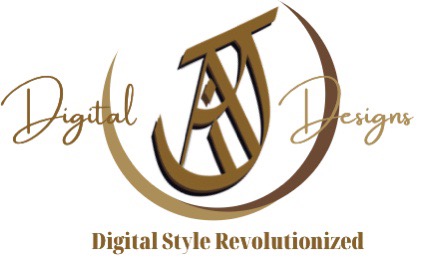Why is typography important?
- JHAI Designs

- Jul 2, 2022
- 4 min read

Typography is the art of arranging type in order to make it visually appealing, readable, accessible, meaningful, effective, and fun. It's also one of the most important aspects of design.
Aside from being a full-range typeface that can be used in both headlines and text blocks — making it easy for designers to incorporate into their workflows — Pica Type offers a number of features designed specifically with web typography in mind:
Its extended character set includes all diacritics and punctuation marks you need to get your point across;
Its extensive language support ensures every English-speaking user around the globe has an excellent reading experience; and finally...
Its clean lines mean it looks great when scaled up or down without losing quality (making it perfect for responsive layouts).
What makes a typeface legible.
Font size
Line height (line spacing)
Letter spacing
Each of these factors is important in creating a typeface that is legible. Let’s break them down:
When to use serifs.
Serifs are best used for long passages of text, such as those found in newspapers, magazines, and textbooks. Their purpose is to help readers read quickly but still easily understand the words on the page. In these situations where there's a lot of information and it needs to be up on the screen for an extended period of time (or even all day) serifs can help guide us through that text without getting lost or confused about what we're reading. Serifs also provide a more traditional feel and look like you would see in old-fashioned books or manuscripts from centuries ago.
When to use sans serifs.
When you want to convey a sense of modernity or to create a sense of calm and order in your design work. When you want to create a feeling of simplicity and clarity. When you want to add a touch of elegance or balance. If the text is small and probably won’t be read by people with bad eyesight; if it’s going on something like an envelope where space is at a premium; when creating something simple but classy-looking that doesn’t need any special attention drawn to it (such as the heading above this paragraph, which isn't sans serif).
When using these typefaces, keep in mind that they are more legible than serifs in small sizes because their straight lines help guide the eye from one letter to another without confusion. However, avoid using them for large amounts of text because this can make things appear uninvitingly harsh—plus there are better options out there for large bodies of copy!
Best practices for combining typefaces.
Deciding on one serif and one sans serif typeface is a great place to start. The best combination is often the simplest: two complementary fonts that use different letterforms but are similar enough in weight, width, size, and style.
If you have a lot of text to set and you're looking for variety in your typeface options, look for a font with many different weights (light, regular, semi-bold), widths (condensed or extended), and sizes (small-caps!). That way you can mix up the typography throughout your design without having to change fonts every time there's a variation in weight or style. For example Georgia Italic would be an excellent choice for body copy if you wanted something readable but not overly formal; Brioso Bold would be perfect if you need something more adventurous (and not too distracting); Steelfish Sans Narrow could work well as small caps since it has so much personality; Bell Centennial Condensed Extra Bold would fit well as display text because of its large x-height and high contrast between thick strokes and thin strokes; Sabon Book Italic could add elegance as well as a distinction from other sans serifs due to its pronounced ball terminals on some letters such as "t", "e" or "a". You get the idea!
Best practices for using and combining typefaces
There are a number of ways to pair typefaces. For example, if you want to use two different serif fonts for a headline and body text, it's best to choose a serif for the main title, and then combine that with a sans serif for the body text. This is because serifs tend to be more formal than sans serifs—and thus make an effective contrast when used together in different weights (i.e., bold vs regular).
Another option is combining two different families (i.e., styles) of the same typeface. For example, Georgia and Miller might look great together as long as they're both set in the same weight (regular). So try experimenting with combinations like this one until you find something that works well!
Typography is one of the most important aspects when it comes to designing a website. With so many options available online, it can be difficult to know where to begin. By following these simple guidelines and best practices, you will have a leg up on your competition!
THANK YOU, so much for letting us be a part of your design journey! We will email you several times a month. If you're worried about missing something important, make sure that these emails are added to your safe sender list if you haven't already, so you don't miss any gems coming your way.
We hope that you enjoy the content.
Feel free to send us a note, we would love to hear from you. You can reach us at info@jhaidesigns.com or 667-230-5424.
Best Regards,
The JHAI Digital Designs Team



Comments